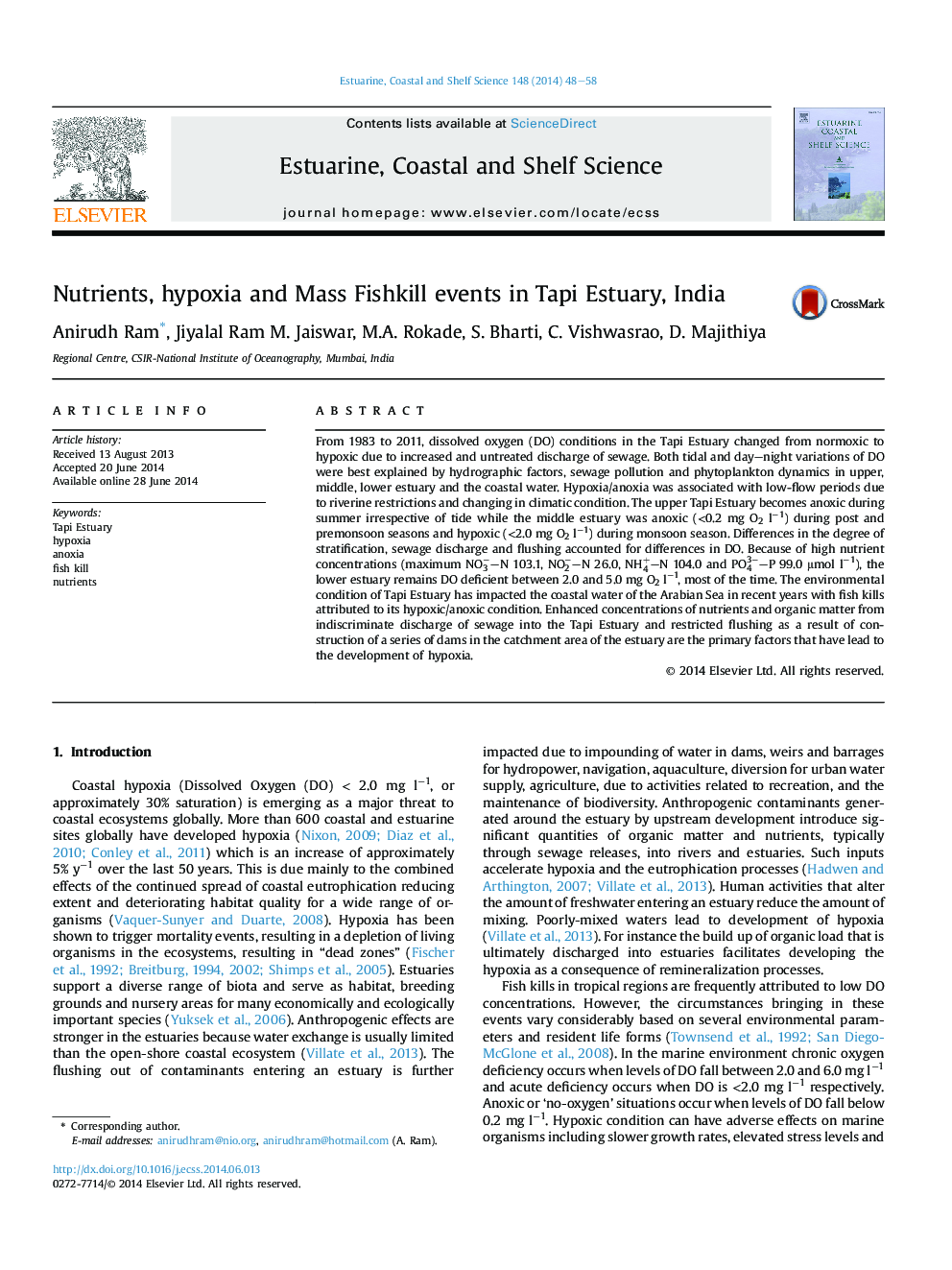| کد مقاله | کد نشریه | سال انتشار | مقاله انگلیسی | نسخه تمام متن |
|---|---|---|---|---|
| 6384851 | 1626648 | 2014 | 11 صفحه PDF | دانلود رایگان |
عنوان انگلیسی مقاله ISI
Nutrients, hypoxia and Mass Fishkill events in Tapi Estuary, India
دانلود مقاله + سفارش ترجمه
دانلود مقاله ISI انگلیسی
رایگان برای ایرانیان
موضوعات مرتبط
مهندسی و علوم پایه
علوم زمین و سیارات
زمین شناسی
پیش نمایش صفحه اول مقاله

چکیده انگلیسی
From 1983 to 2011, dissolved oxygen (DO) conditions in the Tapi Estuary changed from normoxic to hypoxic due to increased and untreated discharge of sewage. Both tidal and day-night variations of DO were best explained by hydrographic factors, sewage pollution and phytoplankton dynamics in upper, middle, lower estuary and the coastal water. Hypoxia/anoxia was associated with low-flow periods due to riverine restrictions and changing in climatic condition. The upper Tapi Estuary becomes anoxic during summer irrespective of tide while the middle estuary was anoxic (<0.2 mg O2 lâ1) during post and premonsoon seasons and hypoxic (<2.0 mg O2 lâ1) during monsoon season. Differences in the degree of stratification, sewage discharge and flushing accounted for differences in DO. Because of high nutrient concentrations (maximum NO3â-N 103.1, NO2â-N 26.0, NH4+-N 104.0 and PO43â-P 99.0 μmol lâ1), the lower estuary remains DO deficient between 2.0 and 5.0 mg O2 lâ1, most of the time. The environmental condition of Tapi Estuary has impacted the coastal water of the Arabian Sea in recent years with fish kills attributed to its hypoxic/anoxic condition. Enhanced concentrations of nutrients and organic matter from indiscriminate discharge of sewage into the Tapi Estuary and restricted flushing as a result of construction of a series of dams in the catchment area of the estuary are the primary factors that have lead to the development of hypoxia.
ناشر
Database: Elsevier - ScienceDirect (ساینس دایرکت)
Journal: Estuarine, Coastal and Shelf Science - Volume 148, 5 July 2014, Pages 48-58
Journal: Estuarine, Coastal and Shelf Science - Volume 148, 5 July 2014, Pages 48-58
نویسندگان
Anirudh Ram, Jiyalal Ram M. Jaiswar, M.A. Rokade, S. Bharti, C. Vishwasrao, D. Majithiya,